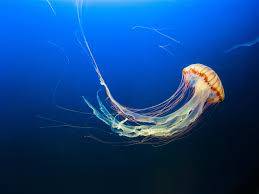1. JELLYFISH
In 2007, researchers from the University of Kansas found new fossil evidence of jellyfish going back over half a billion years, 200 million more than the oldest know jellyfish fossils up until that point.
2. HORSESHOE CRAB
Horseshoe crabs are among the most well-known of "living fossils," having remained virtually unchanged for an astonishing 445 million years on Earth. Canadian scientists found a new horseshoe-crab fossil that dated that far back in 2008.
3. COELACANTH
Scientists have studied the very rare, endangered fish with great interest because they are so similar to the ancient fish that eventually evolved to crawl out of the water and become the first land vertebrate.
4. DUCK BILLED PLATYPUS
The duck-billed platypus truly looks as if it belongs to another era, if not another planet. This animal is different from its living relative in retaining adult teeth and some particular skull characteristics, but the skull shape is strikingly similar
5. LICE
Although louse fossils are rare, in 2004 paleontologists announced that they had found a 44-million-year-old feather louse that was strikingly similar to lice that live on the plumage of waterbirds today. The record of lice probably goes back even further.
6. TORTOISE
Tortoises are famed for their longevity. The oldest living land animal is a 190-year-old Seychelles giant tortoise. The tortoise lives on the island of St. Helena in the South Atlantic Ocean after having been brought there by people from the Seychelles in 1882.
7. CROCODILES
They are the last living representatives of the crocodylomorpha, an even bigger group that originated over 205 million years ago. They shared the world with the dinosaurs and came in a startling array of forms.
8. GREENLAND SHARKS
Greenland sharks live deep in the Arctic and North Atlantic oceans. They can grow to be 7.3m long and have a diet that includes a variety of other animals. It was estimated that these sharks can have a maximum life span of at least 272 years


